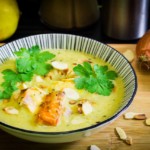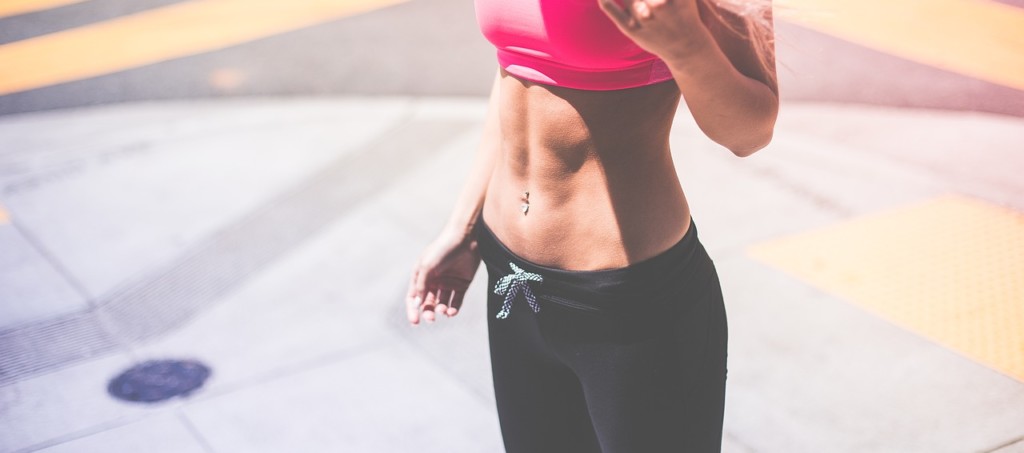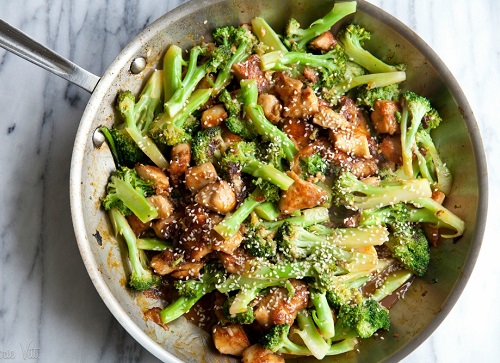Preamble
What if there was a way of eating that maximized our chances of living as long and as healthy a life as possible?
Table of contents
Hide- 1.Preamble
- 2.Blooness for slimming down, getting in shape, and limiting the risk of developing disease
- 3.Individual differences, but a common base
- 4.Important reminders
- 5.Table of contents
- 5.1.Volume 1 - Introduction to the basics of nutrition
- 5.2.Volume 2 - the ultimate guide to the ketogenic / keto and low-carb high-fat diet.
- 5.3.Volume 3 - The ultimate guide to the Mediterranean diet
- 5.4.Volume 4 - Blooness and sport: the ideal sportsman's diet
- 5.5.Volume 5 - Food control guide
- 5.6.Volume 6 - The ultimate guide to superfoods
- 5.7.Upcoming topics:
And what if the ingredients we ingest every day had an influence on our life expectancyand on the likelihood of contracting a chronic disease of varying severity, from a simple allergy to cancer?
What if it were possible, thanks to optimal nutrition, to find a ideal body weightwhether we're sedentary or sporty?
What if food could give us the best possible physical, cerebral and mental fitnesswithout feeling tired, without uncontrollable hunger pangs, and with better concentration?
Start with food to maximize your health, your figure and your physical and mental fitness, here's an idea that's not so far-fetched.
This content is part of the guide Blooness, the guide to the ideal human diet, the summary of which you can find here 🌱🥑
And that's exactly the approach we're going to take here.
In short, Blooness is for you if one or more of the following applies to you:
Would you like to change your diet for something healthierbut you don't know where to start.
You're lost with all the conflicting theories, and the wealth of information on the Internet.
You don't know which diet to adopt according to your lifestyle: sedentary, sporty, fat loss and/or muscle gain.
Your energy is sometimes at half-mast, and you don't understand why.
You want to maximize your chances of being in good healthfor as long as possible.
You don't necessarily want to learn to cook like a chef, or at least you don't want to cook every day.
Blooness for slimming down, getting in shape, and limiting the risk of developing disease
The influence of diet on health is a postulate accepted by the scientific community and public authorities alike. However, the solutions proposed to date remain evasive, sometimes dogmatic, often unfounded.
French-speaking subscribers will receive the newsletter in French, and all others will receive an English version.
That's right, "eat a balanced diet, less fat, less salt, less sugar, fewer calories".is not a valid piece of advice. In fact, we are going to challenge these prejudices, and defend, for example, the idea that "Eating fat and eating more can actually help you lose weightContrary to popular belief, it's much more natural and effective than intense, demotivating cardio programs combined with low-calorie or high-protein diets that can be stressful for the body.

Of course, diet is no substitute for medicine. But as a complement to treatment, or as a preventive measure, eating in the most optimal way for human beings, by providing them with what they know best how to metabolize, is already putting the maximum chances on their side.
Individual differences, but a common base

To develop the Blooness power supply, we were interested in to what workedand simply what worked.
By reviewing hundreds of archives, personal accounts and scientific studies, we have synthesized the following information the very best in nutritionThe result is an ideal that can then be adapted to each individual.
The Blooness guide is not a scientific compendium, but a guide that synthesizes and popularizes emerging and age-old concepts of nutrition to improve health, vitality and longevity.
There's a common denominator for all human beings. A foundation that groups together the basics, enabling us to enjoy the best that nature has to offer in terms of food. Then, each individual, depending on his or her genetic make-up, metabolism, objectives and tastes, can adapt this diet and make it his or her own.
This ideal is inspired by several nutritional fundamentals:
- The low-carb high-fat or ketogenic diet in its stricter version, reducing carbohydrate and sugar intake in favor of (good) lipids, i.e. fats, unjustly demonized since the 60s.
- Feeding the Blue ZonesThese are the regions of the world where life expectancy beats records, and where civilization diseases are rare (diabetes, cancer). What do they eat? Let's find out.
- The Paleolithic dietThis is because our bodies have not yet adapted to the radical changes that have taken place since the Neolithic revolution, which marked the advent of agriculture over 10,000 years ago, and even less so since the Industrial Revolution.
- Veganism and flexitarianismWe're working towards a "Blue Zones" diet, with more vegetable fats, more vegetables and more legumes.
- And finally, chrono-nutritionwhich involves giving importance to the timing of food intake.
Don't forget to subscribe to our newsletter so you don't miss any new chapters.
We're not going to apply these types of diet to the letter - although that will again depend on each person's goals and metabolism - but draw inspiration and make the most of it. Don't worry, the different variations will be explained, so that you can make the main principles of this ultra-healthy diet your own, while adapting it to your situation (sedentary, sporty, manual work, office work, etc.).

Other inspirations will be added to these types of diet, in order to implement this "dietary ideal" during the reading of this white paper, such as the highlighting of "superfoods" or the benefits of certain spices.
Important reminders

The Blooness diet is not a diet. It's just a bunch of tips to adapt on a daily basis to maximize the chances of giving our bodies the best possible fuel.
What's more, this is not a low-calorie diet based on frustration and deprivation, since it's based on rich, generous meals that focus on the pleasure of eating.
Blooness is not a substitute for a doctor. If you need treatment, seek it.
Finally, it's not about a dogmatic diet that would forbid "deviations"! The aim is to transform the meals we usually eat without paying any particular attention, into meals that your body will love to metabolize.
So it's only over time that it can work, while not denying ourselves meals of pleasure, a drunken evening or a craving for fast food when the occasion arises, once in a while. In this way, we try to aim for the ideal as far as possible, without falling into extremism.
The information contained on this site is provided for information purposes only and does not constitute medical advice. It is simply a summary of content available on the Internet. The content provided (articles, advice, recommendations) should not be used to diagnose or treat a health problem or disease. We strongly advise you to consult a qualified health professional (doctor, dietician) before implementing any changes to your diet or lifestyle.
The site cannot be held responsible for any decision taken on the basis of the information provided and for any consequences arising therefrom.
Table of contents
Don't hesitate to subscribe to our newsletterand follow Blooness on Facebook, Twitter and Instagram to be notified when a new chapter is released...
Volume 1 - Introduction to the basics of nutrition
In this section, you'll learn how to juggle the various terms that make up the lexicon of nutrition. Before getting into the nitty-gritty, it's a good idea to know the basics, and that's what this section is all about!
Introduction to nutrition (you are here)
Part 1: Macronutrients
Learn about the fundamentals of nutrition: macronutrients.
- All you need to know about macronutrients: carbohydrates, lipids and proteins and their distribution
- Macronutrients: official nutritional recommendations
- All you need to know about carbohydrates: daily intake, list of foods, definition
- Fibre: definition, benefits, foods and recommended daily amounts
- Proteins: definition, intake and recommended quantity
- All you need to know about protein complementarity
- Fats: definitions, benefits, recommended amounts and high-fat ingredients
Part 2: Micronutrients
In addition to macronutrients (proteins, carbohydrates, lipids), don't forget to understand the benefits of micronutrients (vitamins and minerals), to make the most of them for your diet.
Section 1: Vitamins
- All you need to know about vitamins: requirements, rich foods, benefits
- All you need to know about Vitamin A: benefits, dangers, foods
- Everything you need to know about Vitamin D
- Vitamin E: benefits, needs, sources and supplements
- Vitamin K: definition, benefits and foods rich in vitamin K
- All you need to know about Vitamin C: definition, benefits, foods and recommended dosage
- All you need to know about vitamin B1: definition, benefits, foods and recommended dosage
- Vitamin B2: role, dietary sources and benefits for the body
- All about vitamin B3 or PP or niacin
- Vitamin B5: what you need to know for good health
- What is vitamin B6? We tell you all about its origin, properties and benefits!
- Vitamin B8: what you need to know about the "beauty" vitamin
- Eating well for your health: everything you need to know about vitamin B9
- All about vitamin B12
Section 2: Minerals
- The ultimate guide to mineral salts: what are they used for, what dosage is recommended and what foods contain them?
- All you need to know about calcium: properties, roles, daily requirements and dietary sources
- Magnesium: role, benefits, recommended intakes, sources, properties, dosage
- All you need to know about potassium
- Phosphorus: everything you need to know about this vital mineral
- Sulfur to clear the respiratory tract: everything you need to know about this important mineral
- Sodium and health: everything you need to know about this important mineral
- Chlorine and chloride: danger and health benefits
- Fluoride, the essential trace element for beautiful teeth
- Copper for dummies: health and well-being
- Zinc and health: everything you need to know about this vital mineral
- Chromium: what you need to know about this anti-sugar trace element
- Everything you need to know about selenium
- All you need to know about iodine: roles, requirements and dietary sources
- Iron: its role, benefits, dietary sources and daily needs
- Ideal dosage of multivitamins and minerals: which is the best multi-vitamin on the market?
- Conclusion and summary of part 1: what you need to know about vitamins, macro and micronutrients
Volume 2 - the ultimate guide to the ketogenic / keto and low-carb high-fat diet.
Now that you know the difference between carbohydrates, fats, vitamin D and mineral salts, you can turn your attention to Volume 2 of the Blooness Guide, devoted to low-carb diets. What's the point, why, for whom and how?
Summary and introduction to the ketogenic and low-carb guide
Part 1: The origins of the predominance of sugar and carbohydrates
Understand why and how sugar, and more generally carbohydrates, have formed the basis of our diet, against all dietetic and health logic.
- The origins of sugar and carbohydrate dominance
- The origin of fat hunting: Ancel Keys and the 7 countries study
- The demonization of fats: an agro-industrial plot?
- Fat's return to favour: eat fat to lose weight and stay healthy?
Part 2: Introduction to the Low Carb High Fat and Ketogenic diets for beginners
Reducing carbohydrates is the No. 1 pillar of the Blooness diet. In this section, you'll learn the basics and how to get started with this type of diet.
- The Low Carb High Fat diet
- The ketogenic diet: 3 minutes to understand it all
- Low Carb High Fat or Ketogenic: which diet should you choose?
- What to eat on the ketogenic and low-carb high-fat diet?
- What to drink on the ketogenic diet
- Foods to avoid on the ketogenic diet
Part 3: The ketogenic diet and Low Carb High Fat, expert mode
- Lipids: the right ratio of Omega 3, Omega 6 and Omega 9
- Cooking oils and fats
- Everything you need to know about GHEE butter: benefits, where to find it, how to make it
- The importance of magnesium in the low-carb diet (ketogenic and low-carb high-fat)
- The importance of sodium in the ketogenic or low-carb high-fat diet
- The importance of potassium in the ketogenic or low-carb high-fat diet
- What are the electrolyte and mineral intakes on the ketogenic or low-carb high-fat diet?
- The Low Carb and ketogenic diets for sports and bodybuilding
- All you need to know about Dr Laurent Schwartz's metabolic treatment
- A list of low-carb foods for keto and low-carb diets
- Glycemic index, glycemic load, insulin index: understanding blood sugar and carbohydrates
- The Paleolithic diet
- What is the difference between a keto diet and a low-carbohydrate weight loss diet? - [MEMBER ZONE]
Once this major part has been integrated, we can move on to the third major part of the Blooness guide, on the Mediterranean diet.
Volume 3 - The ultimate guide to the Mediterranean diet
Introduction and summary of the Mediterranean diet
Part 1: plants in the Mediterranean diet
- Feeding the Blue Zones
- Mediterranean diet: the ultimate list of the best vegetables to eat for good health
- Mediterranean diet: the complete list of spices, condiments and herbs
- Mediterranean diet: the important question of cereals
- Top healthy breads, when and how to eat them
- Mediterranean diet: the vital importance of legumes
Part 2: Fruit in the Mediterranean diet
- Mediterranean diet: the vital importance of oilseeds for health, waist circumference and longevity
- Mediterranean diet: the best dried oleaginous fruits for health, waistline and longevity - [MEMBER ZONE]
- Mediterranean diet: the ultimate guide to the best oilseeds for health - [MEMBER ZONE]
- Mediterranean diet: all you need to know about olives and olive oil (calories, benefits and recommended intakes) - [MEMBER ZONE]
- Why the avocado is one of the healthiest fruits in the world - [MEMBER ZONE]
- What you need to know about the health-giving powers of coconut and its oil - [MEMBER ZONE]
- Mediterranean diet - the ultimate guide to fruit and fructose: good or bad for your health? - [MEMBER ZONE]
- The 10 best fruits for health and weight loss
Part 3: proteins in the keto-mediterranean diet
- The ideal protein intake for the keto-mediterranean, paleo, carnivore and low-carb diets
- Protein intake: what are the risks of eating too much? - [MEMBER ZONE]
- Are you protein deficient? Discover the signs, risks and reasons for protein deficiency - [MEMBER ZONE]
- The various protein bioavailability indicators - [MEMBER ZONE]
- The ultimate list of the most bioavailable and healthiest protein foods for the body - [MEMBER ZONE]
- Weight maintenance, weight loss and vitality thanks to proteins in keto, low-carb and Mediterranean diets - [MEMBER ZONE]
- Optimal intakes of proteins, carbohydrates and fats for the best possible health and figure - [MEMBER ZONE]
Part 4: Meat in the keto-mediterranean diet
In this section, we'll list the best dietary sources of protein from meat, as well as the labels and farming methods to choose in order to increase the chances of optimizing health and longevity on keto, carnivorous, paleo, Mediterranean and anti-inflammatory diets.
- Meat in the keto-mediterranean diet (Contents)
- The difference between red meat, white meat and tripe
- The ultimate guide to organ meats for full health on a keto and Mediterranean diet. [MEMBER ZONE]
- Cattle, sheep, pigs: a guide to animal families and their characteristics
- Ruminant feed: from its origins to the changes made by man - [MEMBER ZONE]
- Chicken and health: from ancestral diet to intensive farming, the keys to quality white meat - [MEMBER ZONE]
- The best red meat channels for health, longevity and a healthy weight - [MEMBER ZONE]
- White meat and health: which channels and labels are best for optimal nutrition? - [MEMBER ZONE]
Coming soon:
- The best meat labels, chains and farming methods for your health
- Different cooking methods (grilling, braising, etc.)
- The different cuts of beef
- The different cuts of lamb
- The different cuts of pork
- Poultry
- Animal fats
- The ultimate list of the best cuts of meat and how often to eat them
Part 5: Dairy products in the keto-mediterranean diet
Part 6: Drinks in the Mediterranean diet
- Drinks in the Mediterranean diet
- Wine in the Mediterranean diet
Part 7: Lifestyle, energy and weight loss in the Mediterranean diet
- Foods to limit in the Mediterranean diet
- The Mediterranean lifestyle
- The French paradox
- Why and how the Mediterranean diet is good for your health
- Weight loss on the Mediterranean diet
- Carbohydrate intake in the Mediterranean diet
Part 8: Blue Zones
The Okinawa diet
Ikaria island diet
Food on the Nicoya Peninsula
The Loma Linda diet
The regime on Kitava Island, New Guinea
Regime in certain areas of India
Conclusions
- Conclusion on the Mediterranean diet
- Putting the Mediterranean diet into practice
Volume 4 - Blooness and sport: the ideal sportsman's diet
Carbohydrates and weight gain
Focus on carbohydrate rebound
Sport and paleo diet
Sport and Blooness
Volume 5 - Food control guide
Milk and dairy products
Saturated fats
Soya
Gluten
Volume 6 - The ultimate guide to superfoods
Turmeric
Ginger
Flax seeds
Hemp seeds
Chia seeds
Coconut oil
Spirulina
Lawyer
Nuts
Upcoming topics:
- An update on pro- and prebiotics
- Acid-base balance
- Testosterone and estrogen
- The best dietary supplements
- Avenues against diseases of civilization
- Mitochondria
- Longevity
- Sweeteners
Is there a particular topic you'd like us to cover? Submit it below in comments to add it to the roadmap!
